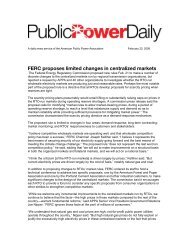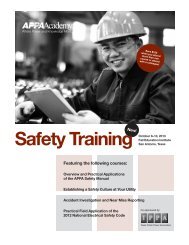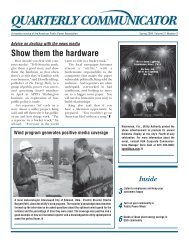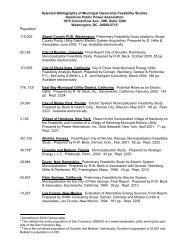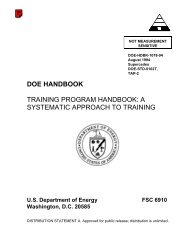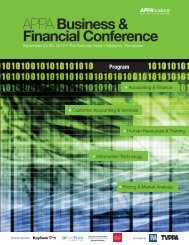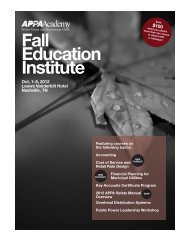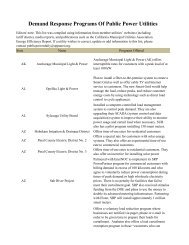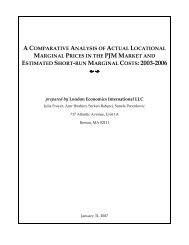Safeguarding Classified and Sensitive But Unclassified Information ...
Safeguarding Classified and Sensitive But Unclassified Information ...
Safeguarding Classified and Sensitive But Unclassified Information ...
You also want an ePaper? Increase the reach of your titles
YUMPU automatically turns print PDFs into web optimized ePapers that Google loves.
• Individuals with an Interim SECRET clearance may have access <strong>and</strong> may use the phone,<br />
but the STU-III/STE can only be deployed where an individual with a Final SECRET<br />
clearance or higher can take responsibility for it/them.<br />
Faxing <strong>Classified</strong> <strong>Information</strong><br />
<strong>Classified</strong> materials must not be transmitted over any fax machines that have not been approved<br />
specifically for that purpose. Contact DHS OS/ASD for fax machines approved for classified<br />
transmittal. A justification is required with your request for approval to use a secure fax. When<br />
activated to receive, approved secure fax machines will be under the constant surveillance of<br />
cleared personnel unless the room/area in which the secure fax resides has been approved for<br />
open storage by DHS OS/ASD or another Federal agency.<br />
Reportable COMSEC Incidents<br />
With any secure communications system, insecurities <strong>and</strong> compromises of terminals <strong>and</strong> keys<br />
are possible. The design of the STU-III/STE terminals minimizes the threat of compromised<br />
communications. The following incidents are to be reported immediately to the COMSEC<br />
Custodian:<br />
• Loss of any CIK/KOV card must be promptly reported to your local supporting COMSEC<br />
custodian/alternate so the key or card can be deleted from the respective terminal. (If a<br />
CIK/KOV is broken or damaged it should be returned to the local COMSEC custodian for<br />
replacement.)<br />
• Loss or missing STU or STE terminal.<br />
• Leaving the CIK/KOV in a terminal when the terminal is unattended <strong>and</strong> in a nonsecure<br />
area.<br />
• Using a STU-III/STE terminal in the secure mode when the visual display in inoperable.<br />
• Indication in the terminal’s display that the distant terminal contains compromised key.<br />
• Failure to rekey a terminal within two months of the end of the cryptoperiod.<br />
• Failure to adequately protect or zeroize a CIK/KOV that is associated with an unkeyed<br />
terminal which is lost.<br />
Security Violations<br />
A security violation or infraction is any breach of security regulations, requirements, procedures<br />
or guidelines, whether or not a compromise results. No matter how seemingly minor, any security<br />
infraction or violation must be reported immediately to DHS OS/ASD, so that the incident may be<br />
evaluated <strong>and</strong> any appropriate action taken.<br />
The following are examples of security violations:<br />
• Leaving a classified file or security container unlocked <strong>and</strong> unattended either during or<br />
after normal working hours.<br />
• Keeping classified material in a desk or unauthorized cabinet, container, or area.<br />
• Leaving classified material unsecured or unattended on desks, tables, cabinets, or<br />
elsewhere in an unsecured area, either during or after normal working hours.<br />
22



